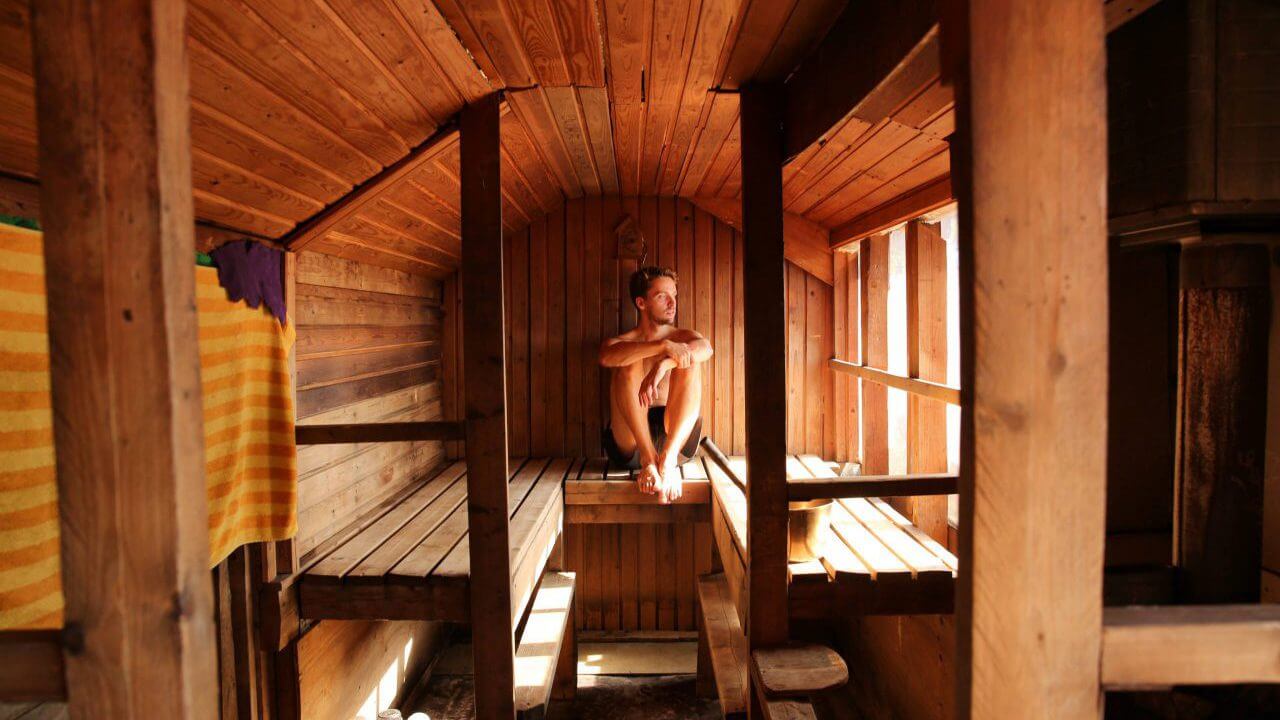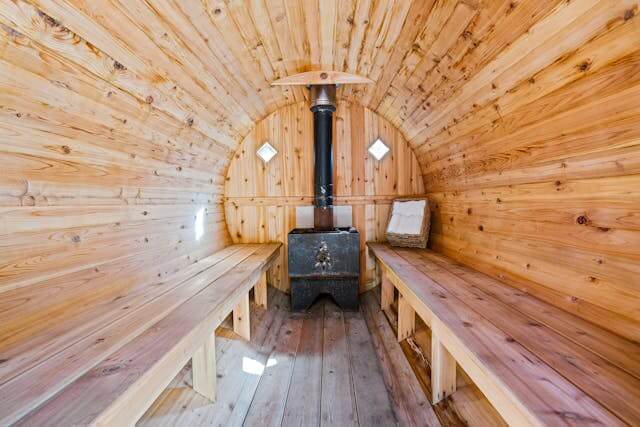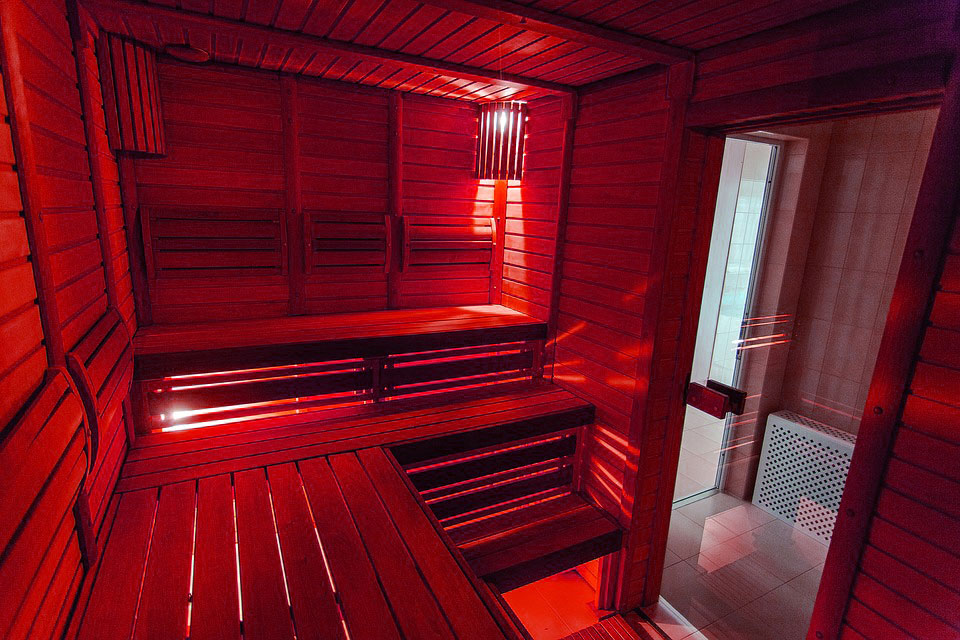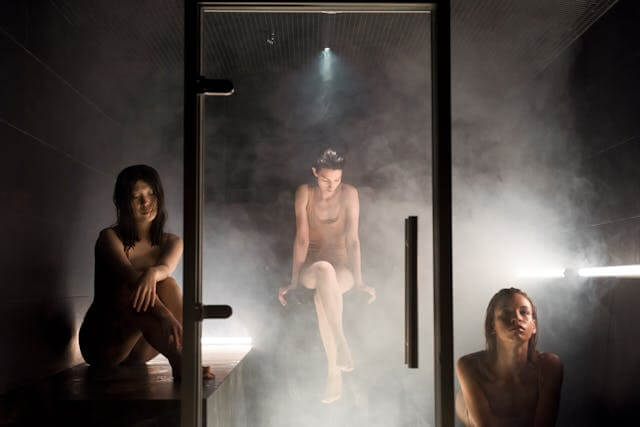Tipo de sauna: Duração, Queima de calorias, e temperatura ideal
Tipo de sauna: Duração, Queima de calorias, e temperatura ideal
Quanto tempo você deve ficar na sauna?
The optimal length of a sauna may vary depending on a number of factors, including your level of experience, the type of sauna, and your personal health.
For beginners, it is normally suggested to begin with shorter sessions of concerning 5-10 minutos. This enables your body to slowly adjust to the warm. A lot more seasoned customers can expand their sessions to 15-20 Mins, which is usually thought about the pleasant area for most individuals to profit without straining themselves.
It’s also important to remember that various saunas may have different ideal session times:
| Sauna Kind | Advised Period |
|---|---|
| Traditional Finnish Sauna | 15-20 Mins |
| Sauna infravermelha | 20-30 Mins |
| Sauna a vapor | 10-15 Mins |

It is very important to take care of your body during the sauna. If you start to feel dizzy, lightheaded or uncomfortable, it is advisable to leave the sauna immediately and calm down. Hydration is also important; make sure you drink plenty of water before and after the sauna to stay hydrated.
Para concluir, while the ideal sauna time may vary, the general guideline is to start with a shorter time and slowly increase the time as you become more familiar with the sauna. Always prioritize your comfort and safety to make the most of your sauna experience.
How Many Calories do You Burn in a Sauna?
When it pertains to calorie burn in a sauna, it’s vital to comprehend the mechanisms at play. The primary way a sauna help in burning calories is through the boost in heart price and the body’s initiative to maintain an optimum core temperature level. As you sit in a sauna, your heart rate can boost similarly to the way it does during modest workout. This elevated heart rate requires more power, which subsequently burns calories.
Apesar disso, the number of calories burned in a sauna session can differ considerably based upon numerous aspects. These consist of the individual’s weight, the temperature level of the sauna, and the period of the session. On average, a 30-minute session in a sauna can shed in between 150 para 300 calorias. It is necessary to keep in mind that while this is a valuable addition to a fitness regimen, it needs to not be depended upon as the sole approach for weight reduction.
| Tempo (minutos) | 45°C | 60°C | 75°C | 90°C | 105°C |
|---|---|---|---|---|---|
| 15 | 51.8 | 62.0 | 75.5 | 88.9 | 102.4 |
| 30 | 103.5 | 124.0 | 151.0 | 177.8 | 204.8 |
| 45 | 155.3 | 186.0 | 226.5 | 266.7 | 307.2 |
| 60 | 207.0 | 248.0 | 302.0 | 355.6 | 409.6 |

Determine the time spent in the sauna:
Calculate calories burned:
On average, a person burns about 500 kcal per hour in a sauna.
Use the formula:
Calories burned[𝑘𝑐𝑎𝑙]=(𝑡/60) × 500
Where “𝑡” is the time in minutes.
Calculate weight loss:
Use the formula:
Weight loss[𝑘𝑔]=Calories burned[𝑘𝑐𝑎𝑙]/7700
Where 7700 kcal is approximately the energy required to lose 1 kilogram of body weight.
It is worth noting that the initial weight loss after a sauna is mainly due to water loss from sweating. Weight is usually regained after rehydration. Portanto, while saunas can be an effective tool for burning calories, they should be combined with a balanced diet and regular exercise for lasting weight management.
Tips for Making The Most Of Calorie Burn in a Sauna
| Tip | Descrição |
| Optimize Session Duration | Stay in the sauna for 15-20 minutes per session. Longer sessions can cause dehydration and health risks, while shorter sessions may not be as effective. |
| Choose the Right Temperature | For traditional saunas, set the temperature between 150°F and 195°F (65°C to 90°C). For infrared saunas, set it between 120°F and 140°F (50°C to 60°C). |
| Stay Hydrated | Drink water before, during, and after your sauna session to maintain your body’s ability to sweat and regulate temperature. |
| Incorporate Light Exercises | Perform gentle exercises like stretching or yoga to increase heart rate and enhance calorie burn. Avoid intense activities to prevent injury. |
| Use Post-Workout Sessions | Utilize the sauna after a workout to extend the elevated heart rate and metabolic rate, leading to additional calorie expenditure. |
| Monitor Your Body’s Response | Adjust the duration and frequency of sauna sessions based on your personal tolerance and comfort levels to maximize benefits safely. |
How Hot Should a Sauna be?
When it comes to maximizing your sauna experience, understanding the excellent temperature settings for different sauna types is important. Each sort of sauna operates best within a particular temperature level array to make sure both safety and efficiency. Below, I will certainly outline the suggested temperature level setups for the most common kinds of saunas: typical Finnish saunas, infrared saunas, and steam saunas.
Traditional Finnish sauna

Traditional Finnish saunas, known for their high temperature levels and low moisture, normally operate within a variety of 70 ° C a 100 ° c( 158 ° F para 212 ° f ). This high heat setting is optimal for advertising intense sweating and leisure. For novices, it is recommended to start at the reduced end of this range and progressively increase the temperature level as you end up being more familiar with the warmth.
Infrared Saunas

Infrared saunas function in different ways from traditional saunas by using infrared heating units to release radiant warm, which is soaked up straight by the body. The ideal temperature level range for infrared saunas is normally lower, in between 45 ° C a 60 ° c(113 ° F para 140 ° f). This reduced temperature permits an extra long term session, usually as much as 45 Mins, while still giving the benefits of deep cells home heating and cleansing.
Sauna a vapor

Vapor saunas, likewise referred to as steam areas, incorporate high moisture with modest temperatures. The excellent temperature level for a heavy steam sauna typically drops in between 40 ° C a 50 ° c(104 ° F para 122 ° f). The high humidity, usually around 100%, intensifies the sensation of warm and advertises sweating. This setting is specifically valuable for respiratory wellness and skin hydration.
| Sauna Type | Recommended Temperature Range | Main Features |
| Traditional Finnish Sauna | 70°C to 100°C (158°F to 212°F) | High temperature, low humidity; promotes intense sweating and relaxation. |
| Sauna infravermelha | 45°C to 60°C (113°F to 140°F) | Lower temperature; suitable for longer sessions, provides deep tissue heating and cleansing effects. |
| Sauna a vapor | 40°C to 50°C (104°F to 122°F) | Moderate temperature with high humidity; enhances sensation of heat, promotes sweating, beneficial for respiratory health and skin hydration. |
By adhering to these excellent temperature settings, you can optimize the advantages of your sauna sessions while making sure a secure and delightful experien
6 Health Benefits of Regular Sauna Use
- Enhanced cardio wellness: The warmth from the sauna causes blood vessels to dilate, which subsequently enhances blood circulation and reduces blood stress. This can be specifically useful for individuals wanting to boost their heart health and wellness.
- Muscular tissue leisure and healing: The heats in the sauna assistance to loosen up muscle mass and reduce tension, making it an exceptional technique for professional athletes or any person experiencing muscular tissue pain. The heat likewise promotes the release of endorphins, which are natural painkiller produced by the body.
- Detoxification: Sweating is among the body’s all-natural methods to eliminate toxic substances, and the intense heat of a sauna generates a deep sweat, helping to eliminate impurities from the body. This detoxifying result can result in more clear skin and a healthier general skin.
- Improve respiratory system function: The cozy, damp setting of a sauna can help to open air passages, decrease congestion, and promote less complicated breathing. This can be specifically helpful for individuals with respiratory problems such as asthma or bronchitis.
- Stress and anxiety reduction: The soothing atmosphere of a sauna, combined with the warmth, can assist to decrease anxiety levels and promote leisure. This can result in boosted mental health and wellness and a much better high quality of rest.
- Boosted immune function: The warm direct exposure can boost the manufacturing of leukocyte, which are essential for battling off infections and illnesses. This immune-boosting impact can assist to keep the body healthier and a lot more resistant.
What Time to Sauna After Dinner?
The basic suggestion is to wait between 1.5 para 2 hours after your dish prior to stepping into the sauna. This timeframe enables your body to initiate the food digestion procedure, avoiding any stress on your system throughout the warmth exposure.
The exact waiting time can differ depending on the size and sort of the dish consumed. As an example, lighter dishes including salads or soups could require a much shorter waiting period of around 1 para 1.5 horas. Por outro lado, much heavier dishes, especially those rich in fats and healthy proteins, may demand waiting closer to the 2-hour mark. Below is a guideline for dish types and advised waiting times:
| Type of Meal | Recommended Waiting Time |
|---|---|
| Snack (Salads, Soups) | 1 – 1.5 horas |
| Modest Meal (Pasta, Grilled Vegetables) | 1.5 – 2 horas |
| Heavy Meal (Steak, Fried Foods) | 2 horas |
Safety Precautions for Sauna Use
| Safety Precaution | Descrição |
| Stay Hydrated | Drink plenty of water before, during, and after your sauna session to prevent dehydration. |
| Monitor Session Duration | Limit sessions to 15-20 minutes to avoid overheating and other health issues. |
| Avoid Alcohol and Drugs | Do not consume alcohol or use recreational drugs before or during a sauna session. |
| Use Proper Sauna Etiquette | Shower before entering, sit on a towel, and keep noise levels respectful. |
| Exit Safely | Exit gradually to avoid a sudden drop in blood pressure, sit before standing, and move slowly to a cooler area. |
O negócio diante dele
Você também quer saber isso…
O negócio diante dele
Tipo de sauna: Duração, Queima de calorias, e temperatura ideal
Quanto tempo você deve ficar na sauna?
The optimal length of a sauna may vary depending on a number of factors, including your level of experience, the type of sauna, and your personal health.
For beginners, it is normally suggested to begin with shorter sessions of concerning 5-10 minutos. This enables your body to slowly adjust to the warm. A lot more seasoned customers can expand their sessions to 15-20 Mins, which is usually thought about the pleasant area for most individuals to profit without straining themselves.
It’s also important to remember that various saunas may have different ideal session times:
| Sauna Kind | Advised Period |
|---|---|
| Traditional Finnish Sauna | 15-20 Mins |
| Sauna infravermelha | 20-30 Mins |
| Sauna a vapor | 10-15 Mins |

It is very important to take care of your body during the sauna. If you start to feel dizzy, lightheaded or uncomfortable, it is advisable to leave the sauna immediately and calm down. Hydration is also important; make sure you drink plenty of water before and after the sauna to stay hydrated.
Para concluir, while the ideal sauna time may vary, the general guideline is to start with a shorter time and slowly increase the time as you become more familiar with the sauna. Always prioritize your comfort and safety to make the most of your sauna experience.
How Many Calories do You Burn in a Sauna?
When it pertains to calorie burn in a sauna, it’s vital to comprehend the mechanisms at play. The primary way a sauna help in burning calories is through the boost in heart price and the body’s initiative to maintain an optimum core temperature level. As you sit in a sauna, your heart rate can boost similarly to the way it does during modest workout. This elevated heart rate requires more power, which subsequently burns calories.
Apesar disso, the number of calories burned in a sauna session can differ considerably based upon numerous aspects. These consist of the individual’s weight, the temperature level of the sauna, and the period of the session. On average, a 30-minute session in a sauna can shed in between 150 para 300 calorias. It is necessary to keep in mind that while this is a valuable addition to a fitness regimen, it needs to not be depended upon as the sole approach for weight reduction.
| Tempo (minutos) | 45°C | 60°C | 75°C | 90°C | 105°C |
|---|---|---|---|---|---|
| 15 | 51.8 | 62.0 | 75.5 | 88.9 | 102.4 |
| 30 | 103.5 | 124.0 | 151.0 | 177.8 | 204.8 |
| 45 | 155.3 | 186.0 | 226.5 | 266.7 | 307.2 |
| 60 | 207.0 | 248.0 | 302.0 | 355.6 | 409.6 |

Determine the time spent in the sauna:
Calculate calories burned:
On average, a person burns about 500 kcal per hour in a sauna.
Use the formula:
Calories burned[𝑘𝑐𝑎𝑙]=(𝑡/60) × 500
Where “𝑡” is the time in minutes.
Calculate weight loss:
Use the formula:
Weight loss[𝑘𝑔]=Calories burned[𝑘𝑐𝑎𝑙]/7700
Where 7700 kcal is approximately the energy required to lose 1 kilogram of body weight.
It is worth noting that the initial weight loss after a sauna is mainly due to water loss from sweating. Weight is usually regained after rehydration. Portanto, while saunas can be an effective tool for burning calories, they should be combined with a balanced diet and regular exercise for lasting weight management.
Tips for Making The Most Of Calorie Burn in a Sauna
| Tip | Descrição |
| Optimize Session Duration | Stay in the sauna for 15-20 minutes per session. Longer sessions can cause dehydration and health risks, while shorter sessions may not be as effective. |
| Choose the Right Temperature | For traditional saunas, set the temperature between 150°F and 195°F (65°C to 90°C). For infrared saunas, set it between 120°F and 140°F (50°C to 60°C). |
| Stay Hydrated | Drink water before, during, and after your sauna session to maintain your body’s ability to sweat and regulate temperature. |
| Incorporate Light Exercises | Perform gentle exercises like stretching or yoga to increase heart rate and enhance calorie burn. Avoid intense activities to prevent injury. |
| Use Post-Workout Sessions | Utilize the sauna after a workout to extend the elevated heart rate and metabolic rate, leading to additional calorie expenditure. |
| Monitor Your Body’s Response | Adjust the duration and frequency of sauna sessions based on your personal tolerance and comfort levels to maximize benefits safely. |
How Hot Should a Sauna be?
When it comes to maximizing your sauna experience, understanding the excellent temperature settings for different sauna types is important. Each sort of sauna operates best within a particular temperature level array to make sure both safety and efficiency. Below, I will certainly outline the suggested temperature level setups for the most common kinds of saunas: typical Finnish saunas, infrared saunas, and steam saunas.
Traditional Finnish sauna

Traditional Finnish saunas, known for their high temperature levels and low moisture, normally operate within a variety of 70 ° C a 100 ° c( 158 ° F para 212 ° f ). This high heat setting is optimal for advertising intense sweating and leisure. For novices, it is recommended to start at the reduced end of this range and progressively increase the temperature level as you end up being more familiar with the warmth.
Infrared Saunas

Infrared saunas function in different ways from traditional saunas by using infrared heating units to release radiant warm, which is soaked up straight by the body. The ideal temperature level range for infrared saunas is normally lower, in between 45 ° C a 60 ° c(113 ° F para 140 ° f). This reduced temperature permits an extra long term session, usually as much as 45 Mins, while still giving the benefits of deep cells home heating and cleansing.
Sauna a vapor

Vapor saunas, likewise referred to as steam areas, incorporate high moisture with modest temperatures. The excellent temperature level for a heavy steam sauna typically drops in between 40 ° C a 50 ° c(104 ° F para 122 ° f). The high humidity, usually around 100%, intensifies the sensation of warm and advertises sweating. This setting is specifically valuable for respiratory wellness and skin hydration.
| Sauna Type | Recommended Temperature Range | Main Features |
| Traditional Finnish Sauna | 70°C to 100°C (158°F to 212°F) | High temperature, low humidity; promotes intense sweating and relaxation. |
| Sauna infravermelha | 45°C to 60°C (113°F to 140°F) | Lower temperature; suitable for longer sessions, provides deep tissue heating and cleansing effects. |
| Sauna a vapor | 40°C to 50°C (104°F to 122°F) | Moderate temperature with high humidity; enhances sensation of heat, promotes sweating, beneficial for respiratory health and skin hydration. |
By adhering to these excellent temperature settings, you can optimize the advantages of your sauna sessions while making sure a secure and delightful experien
6 Health Benefits of Regular Sauna Use
- Enhanced cardio wellness: The warmth from the sauna causes blood vessels to dilate, which subsequently enhances blood circulation and reduces blood stress. This can be specifically useful for individuals wanting to boost their heart health and wellness.
- Muscular tissue leisure and healing: The heats in the sauna assistance to loosen up muscle mass and reduce tension, making it an exceptional technique for professional athletes or any person experiencing muscular tissue pain. The heat likewise promotes the release of endorphins, which are natural painkiller produced by the body.
- Detoxification: Sweating is among the body’s all-natural methods to eliminate toxic substances, and the intense heat of a sauna generates a deep sweat, helping to eliminate impurities from the body. This detoxifying result can result in more clear skin and a healthier general skin.
- Improve respiratory system function: The cozy, damp setting of a sauna can help to open air passages, decrease congestion, and promote less complicated breathing. This can be specifically helpful for individuals with respiratory problems such as asthma or bronchitis.
- Stress and anxiety reduction: The soothing atmosphere of a sauna, combined with the warmth, can assist to decrease anxiety levels and promote leisure. This can result in boosted mental health and wellness and a much better high quality of rest.
- Boosted immune function: The warm direct exposure can boost the manufacturing of leukocyte, which are essential for battling off infections and illnesses. This immune-boosting impact can assist to keep the body healthier and a lot more resistant.
What Time to Sauna After Dinner?
The basic suggestion is to wait between 1.5 para 2 hours after your dish prior to stepping into the sauna. This timeframe enables your body to initiate the food digestion procedure, avoiding any stress on your system throughout the warmth exposure.
The exact waiting time can differ depending on the size and sort of the dish consumed. As an example, lighter dishes including salads or soups could require a much shorter waiting period of around 1 para 1.5 horas. Por outro lado, much heavier dishes, especially those rich in fats and healthy proteins, may demand waiting closer to the 2-hour mark. Below is a guideline for dish types and advised waiting times:
| Type of Meal | Recommended Waiting Time |
|---|---|
| Snack (Salads, Soups) | 1 – 1.5 horas |
| Modest Meal (Pasta, Grilled Vegetables) | 1.5 – 2 horas |
| Heavy Meal (Steak, Fried Foods) | 2 horas |
Safety Precautions for Sauna Use
| Safety Precaution | Descrição |
| Stay Hydrated | Drink plenty of water before, during, and after your sauna session to prevent dehydration. |
| Monitor Session Duration | Limit sessions to 15-20 minutes to avoid overheating and other health issues. |
| Avoid Alcohol and Drugs | Do not consume alcohol or use recreational drugs before or during a sauna session. |
| Use Proper Sauna Etiquette | Shower before entering, sit on a towel, and keep noise levels respectful. |
| Exit Safely | Exit gradually to avoid a sudden drop in blood pressure, sit before standing, and move slowly to a cooler area. |
O negócio diante dele
Você também quer saber isso…
Sobre o autor

Bem-vindo ao nosso blog! Meu nome é Peter e sou o autor principal deste blog. Como praticante de recuperação esportiva e com profundos interesses e experiência.
Tenho o compromisso de apresentar conceitos complexos de maneira clara e concisa, e permitir que os leitores compreendam e apliquem melhor esse conhecimento por meio de pesquisas aprofundadas e compartilhamento de experiências.
Obrigado por ler e pelo seu apoio! Se você tiver dúvidas ou sugestões sobre algum conteúdo, sinta-se à vontade para entrar em contato comigo. Estou ansioso para compartilhar mais informações interessantes e úteis com você e crescer juntos nesta jornada de conhecimento!
